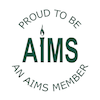Book review by Lynsey Montgomery Nurturing the Family, a Doula’s Guide to Supporting New Parents by Jacqueline Kelleher is available from Praeclarus Press in the US, or local bookstores/Amazon in your own country. When I first saw “Nurturing the family, a doula’s guide to supporting new parents” on offer for review I just knew this…
Doula book reviews
Nurturing Birth Book Review: The AIMS Guide to Giving Birth to Your Baby
Book review by Natalie Stringer The AIMS Guide To Giving Birth To your Baby by Deborah Neiger is available from the AIMS website for £8. The AIMS Guide to Giving Birth to you Baby is a fantastic resource for expectant parents who have maybe not yet explored antenatal education. The contents pages towards the front…






